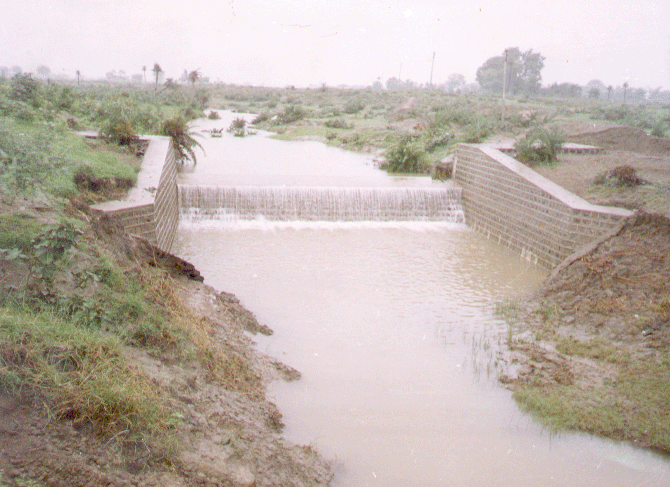Need to Revive
Traditional Water Harvesting Systems
Dr. A Jagadeesh
|
Across
vast areas of India, spread over 12 states - especially Gujarat, Rajasthan,
Madhya Pradesh and Andhra Pradesh - close to 100 million people are caught in
the vice-like grip of a continuing drought. Water appropriation in modern times
is becoming more of a private business enterprise rather than being based on
principle of equitable distribution. As a contrast, traditional systems could
involve the community and their participation in proper management and operation
of the natural resource system. Early man relied on water structures like ponds,
lakes, tanks, wells, baories, nadies, small kutcha bunds, tankas, kund,
khadins, ahars etc. These water bodies were adopted depending on the
cultural value system of the regions and were carefully maintained,
appropriately located and constructed with excellent engineering techniques.
Most scarce rain water was meticulously conserved and stored at various places
for irrigation purposes e.g. the famous chain tanks system in South India.
In Andhra Pradesh alone, there were an impressive number of 58528 tanks during
1955-1956 while Karnataka had 43474 tanks of various capacities. Tanka, talab,
baories in Rajasthan desert also traditionally perform marvelous job of
collecting and storing run off water. The Phad system in Maharashtra, Haveli
system in Madhya Pradesh, Khadin in Rajasthan and Ahar-pyne in Bihar are
excellent water harvesting systems.
The relationship between man and water has been established  over
centuries on the recognition that man (user) cannot be separated from water for
its development. This relationship must exist and continue for sustainable
development.
over
centuries on the recognition that man (user) cannot be separated from water for
its development. This relationship must exist and continue for sustainable
development.
The traditional water harvesting method demonstrated a high degree of
technological perfection and the process of social absorption of the technology–
an aspect missing in modern development, which has adopted the
formula-technology and emphasised transfer of technology.
The need of the hour is to develop an alternative sustainable development
strategy wherein the modern technology should adopt or incorporate the best of
traditional technology. Our motto should be as late reputed Scientist Prof.Y.
Nayudamma put it "Modernise the Traditional — Traditionalise the
Modern". q
The author
is Convener, Nayudamma Centre for Development Alternatives, Nellore, Andhra
Pradesh
Email : a_jagadeesh@yahoo.com;
vayoo@hotmail.com; a_jagadeesh1@usa.net
|

www.gtz.de/basin |

|
|
basin at
EXPO 2000
reported by
Shrashtant Patara
The Building
Advisory Services and Information Network - basin was represented at EXPO
2000. Hannover, Germany as one of the featured exhibits in the Basic Needs
Pavilion designed by acc Indian scenographer Rajiv Sethi.
Promoting the use of affordable building materials that are
environmentally sound and create jobs is one of basin’s primary
objectives. The basin exhibit at EXPO 2000 highlighted how people around
the world have used know-how and expertise available from basin partners -
gate at GTZ in Germany, Intermediate Technology in England, SKAT in
Switzerland, CRATerre in France, CEVE in Argentina, Shelter Forum in Kenya
and Development Alternatives in India - to build "better" for
the future. Development Alternatives worked with Rajiv Sethi and his team
of designers to create a "wall of solutions" full of products
and techniques that were literally floating in free space - symbolic of
the way in which basin facilitates shelter activity - traditional and
technological - in over 60 countries. |

 over
centuries on the recognition that man (user) cannot be separated from water for
its development. This relationship must exist and continue for sustainable
development.
over
centuries on the recognition that man (user) cannot be separated from water for
its development. This relationship must exist and continue for sustainable
development.
